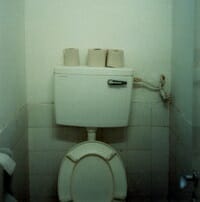Is There a Leak in Your Toilet
Leaking toilets are one of the most frequent types of water leaks in the home. Unfortunately, while a leaking toilet can waste lots of water, it can often escape detection. Here are some common causes of a leaking toilet to help you determine if there is a problem in your home.
If the flapper inside your toilet tank is failing to seat properly, it will not be able to create a tight seal against the valve. This will allow water to leak into the bowl from the tank. Although this may only be a small leak, it could still be wasting gallons of water. Flapper failure could be the result of a worn component or simply because the flapper is out of position.
Improperly Functioning Float:
The float assembly inside your toilet tank usually consists of a plastic ball which is attached to a metal rod. The float assembly lies on the surface of the water and triggers the valve to shut off the water supply when it reaches a certain level. Unfortunately, if the float assembly is not functioning properly, the toilet is likely to run continuously and could even overflow.
Faulty Tank Bowl Gasket:
This gasket is approximately three inches in size and works in conjunction with two bolts, nuts and washers to keep the toilet bowl attached to the tank. If the gasket is faulty or, the bolts have corroded a leak can develop.
Cracked Tank or Bowl:
If the tank or bowl on your toilet develops a crack for any reason, it will need to be replaced immediately. This type of leak can allow a large volume of water to flood into your home, causing significant property damage.
Rusted Pipes:
Rust occurs as a result of corrosion and can affect the metallic components of your toilet assembly. Since many components of your toilet are continually underwater, rust development is quite common, but it can compromise the integrity of the affected component.
Corrosion:
Corrosion can occur as a result of water impurities, chemical reactions or age, and can develop anywhere in the pipes or toilet assembly. It has the potential to be the most physically damaging factor affecting your toilet, yet since it typically occurs within the pipes or fixtures, it can be the most challenging to spot before it develops into a serious problem.
Loose or Worn Feed Line:
The feed line is the pipe which supplies water to the toilet when you flush. If the connection has become loose or worn, it is possible for a leak to develop.
Obstructed Overflow Tube:
The overflow tube is in place to relocate any water should the tank begin to overflow. Unfortunately, if your toilet tank does overflow and the overflow tube has been obstructed, the water will have nowhere to go, except your floor.
Fill Valve Failure:
The fill valve controls the flow of water into the tank. Should the valve fail, it will allow water to leak continually. Unfortunately, older fill valves had metal components that could corrode over time, which reduced their lifespan. If you do need to replace a failed fill valve, ensure that you replace the washer and gasket to ensure that the assembly is watertight.
By Giovanni Longo President Flood Brothers Plumbing
Giovanni Longo is a 3rd generation master plumber who has been practicing his craft and trade in the greater Los Angeles area for well over a decade and a half. A plumbing and hydraulics-engineering innovator, Giovanni’s particular world-class expertise focuses on dealing with challenging sewer system designs as well as resolving complex commercial and residential draining issues. As a certified Flood Mitigation expert, he is also well versed in a wide variety of water damage and remediation solutions.





